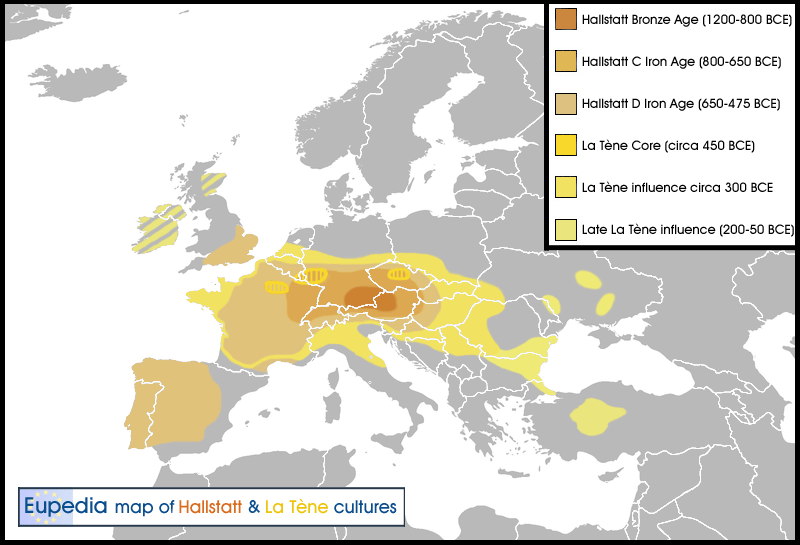Tomenable
Elite member
- Messages
- 5,419
- Reaction score
- 1,337
- Points
- 113
- Location
- Poland
- Ethnic group
- Polish
- Y-DNA haplogroup
- R1b-L617
- mtDNA haplogroup
- W6a
There is also RISE1, but if one claims that he was R1b-M269, then one must also claim the same for Copper Age ATP3 from Iberia:
http://www.anthrogenica.com/showthread.php?5605-R1b-in-Corded-Ware&p=125363&viewfull=1#post125363
http://www.anthrogenica.com/showthr...mbutas-and-R1b&p=107965&viewfull=1#post107965
Of course both RISE1 and ATP3 could indeed be R1b-M269+. I wrote more about ATP3 here:
http://www.eupedia.com/forum/threads/32246-Tracing-Y-dna-sequences?p=479120&viewfull=1#post479120
And Maciamo wrote about him here:
http://www.eupedia.com/forum/thread...er-at-al-2015)?p=466264&viewfull=1#post466264
http://www.anthrogenica.com/showthread.php?5605-R1b-in-Corded-Ware&p=125363&viewfull=1#post125363
Michał said:This [RISE1 sample] is evidently "one of the worse quality samples in the dataset". It shows just one positive call (in one read?) for all known mutations under R1, so in case we accept this is R1b1, we should also accept that the commonly questioned Iberian sample ATP3 from El Portalon is R1b-M269 (or a closely related lineage) or that the Quedlinburg IX sample I0559/QLB15 (Baalberge culture, dated to 3645-3537 BC) is certainly R1 (and possibly R1a or R1b). In other words, if one says RISE1 is "reliable" while ATP3 is "unreliable", this is like using double standards for this type of analysis.
http://www.anthrogenica.com/showthr...mbutas-and-R1b&p=107965&viewfull=1#post107965
Megalophias said:El Portalon cave is located near a pass between the Douro and Ebro basins, maybe the kind of place traders and travellers might wash up?
We can say R1b-M269 is more likely [for ATP3 sample] than the others because the others have contradictory calls - in most cases lots of contradictory calls.
E1b1b1a1-L547+, but E1b1b1a-PF2108-, E1b1b-PF1689-, E1b1-P180-, E-PF1561- (besides it is F+)
I2a2a1b2a2-something-Y16447+ (not old enough anyway according to Y-Full), but I-CTS1006-, IJ-F1450, IJ-Y1943-
J2a1b-S18476+, but J2a-M410-, J2-PF4926-, J-PF4562-, and the 2 IJ-
O3a2c1c1-F1835+, but NO-F415-, NO-M2335-
Q1b-Y1109+, but Q1b-Y1254- (to be fair this might not be equivalent)
Q1a2b2a2-Y1618+, but Q1a2-Y750-
R2(a?)-Y3545+, but R2(a?)-Y3385-, Y3402-, FGC22606-, Y4689-, FGC12636-
R1b1a2-PF6518+, R1b1a-Y97+ (albeit this one is likely spurious), R1-M748+, K-PF5501+, GHIJK-M3773 , F-Y1811+, F-PF2756+.
If it is actually R1b-M269 then it has 6 contradictory calls scattered randomly through a very large number of called SNPs (and these could even be genuine private SNPs for all we know), and a neat unbroken sequence of positive SNPs.
If it was another one then there are more contradictory calls, including negative SNPs upstream in their own lineages, and the R ones just happen to form an unbroken sequence.
So M269 *is* more likely than any of the others, due to that crazy little thing called math.
It could still be just a fluke, or more plausibly contamination (though from what Ted Kandell was saying the R1 SNP sounds genuine). I wouldn't take it as solid proof of early Iberian M269. But I certainly wouldn't bet against finding more either.
Of course both RISE1 and ATP3 could indeed be R1b-M269+. I wrote more about ATP3 here:
http://www.eupedia.com/forum/threads/32246-Tracing-Y-dna-sequences?p=479120&viewfull=1#post479120
And Maciamo wrote about him here:
http://www.eupedia.com/forum/thread...er-at-al-2015)?p=466264&viewfull=1#post466264



